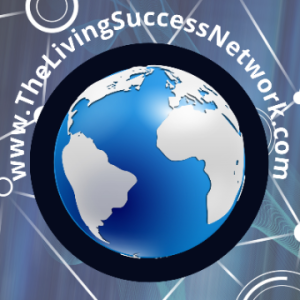Embrace Change and Cultivate Adaptability for Success
Importance of Embracing Change and the Power of Adaptability
In today’s fast-changing business landscape, the ability to embrace change and cultivate adaptability is crucial for both personal and professional development. Embracing change means staying open to new ideas, exploring new opportunities, and taking risks. It’s about viewing challenges as opportunities for growth and being better equipped to navigate the ever-changing and rapidly evolving business world.
The Role of Adaptability in the Workplace
In the modern business world, the pace of change is relentless. Those who are adaptable and have a growth mindset are the ones who stay ahead of the curve. They remain resilient in the face of constant change and uncertainty. They embrace new ideas and approaches, adjust their strategies, and are open to change and willing to learn from mistakes.
Building a Culture of Adaptability
To thrive in this fast-paced world, it’s essential to foster a culture of adaptability within organizations. A culture of adaptability allows businesses to stay flexible and agile, helping them bounce back from setbacks and drive growth and success. It encourages employees to be open to change, embrace innovation, and constantly adjust to the ever-changing business landscape.
The Benefits of Adaptability
The benefits of adaptability are clear. It not only enables personal and professional success but also helps organizations remain competitive. Adaptability refers to the ability to bounce back from challenges and setbacks, becoming stronger on the other side. It’s closely linked to resilience, and those who are adaptable are more likely to persevere in the face of adversity.
The Relationship Between Adaptability and Innovation
Adaptability is not just about surviving change; it’s about thriving in it. It allows individuals and organizations to open themselves up to new opportunities, adjust their business models, and stay informed about market trends. The relationship between adaptability and innovation is strong; adaptability drives innovation, and in turn, innovation fuels adaptability.
Embrace Change, Stay Flexible, and Learn and Grow
In conclusion, change is inevitable in the business world, and those who are resistant to change may find themselves falling behind. To succeed, individuals and organizations need to embrace change, stay flexible and open to change, and foster a culture of continuous learning. In this way, adaptability becomes a key driver of growth and success, ensuring that you are not just keeping up with change but leading the way forward in the ever-evolving world of business.
Conclusion
In a world marked by constant change and uncertainty, the ability to embrace change and cultivate adaptability has never been more crucial. This text has explored the importance of embracing change and the power of adaptability in today’s ever-changing business landscape. By doing so, individuals and organizations can not only survive change but also thrive in it. Adapting to new ideas, remaining open to change, and building a culture of adaptability are the cornerstones of success in the modern world of business.
Incorporating adaptability into your personal and professional development can help you not only stay ahead of the curve but also become more resilient in the face of challenges and setbacks. Furthermore, the close relationship between adaptability and innovation ensures that those who embrace change are better positioned to drive growth and success.
Remember, change is inevitable, and those who are resistant to it may risk falling behind. To ensure your personal and professional success, prioritize adaptability, stay flexible, embrace innovation, and keep learning and growing.
FAQs
1. What is adaptability, and why is it important in the workplace?
Adaptability is the ability to adjust to new circumstances, ideas, and changes. In the workplace, it’s crucial because it allows individuals and organizations to thrive in the face of constant change, foster innovation, and stay competitive.
2. How can I cultivate a culture of adaptability within my organization?
To cultivate adaptability, encourage open communication, embrace new ideas, provide opportunities for continuous learning, and reward adaptability and innovative thinking within your organization.
3. What are the benefits of being adaptable?
Being adaptable enables personal and professional success, resilience in the face of challenges, and the ability to bounce back from setbacks. It also fosters innovation and keeps you competitive in rapidly changing environments.
4. How can I develop a growth mindset to embrace change?
Developing a growth mindset involves viewing challenges as opportunities for growth, being open to new ideas, and being willing to take risks. It’s about believing in your ability to learn and adapt.
5. Why is adaptability closely linked to innovation?
Adaptability drives innovation because it encourages open-mindedness and the willingness to explore new ideas. Innovations often come from adapting to new circumstances and finding creative solutions to problems.
6. How can organizations and individuals stay informed in a fast-paced world?
To stay informed, organizations and individuals can continuously seek new knowledge, monitor industry trends, attend relevant training or conferences, and engage in networking with experts and peers.
7. What role does adaptability play in the face of uncertainty and change?
Adaptability is key in the face of uncertainty and change because it allows individuals and organizations to adjust their strategies, bounce back from setbacks, and navigate uncharted waters with confidence.
8. How can I foster a culture of continuous learning?
Fostering a culture of continuous learning involves encouraging curiosity, providing access to educational resources, offering opportunities for skill development, and promoting a mindset of ongoing improvement.
9. Can adaptability be developed and improved over time?
Yes, adaptability is a skill that can be developed and improved through practice and the adoption of a growth mindset. It’s about embracing change as a constant opportunity for growth.
10. How can I balance adaptability with consistency in my personal and professional life?
Balancing adaptability with consistency involves recognizing when change is necessary and when it’s essential to maintain stability. It’s about being flexible when needed while preserving the core values and principles that are important to you or your organization.
Remember that adaptability is not just a desirable trait; it’s a critical skill for success in today’s ever-changing world. Embrace change, stay open to new ideas, and continue learning to thrive in any environment.


